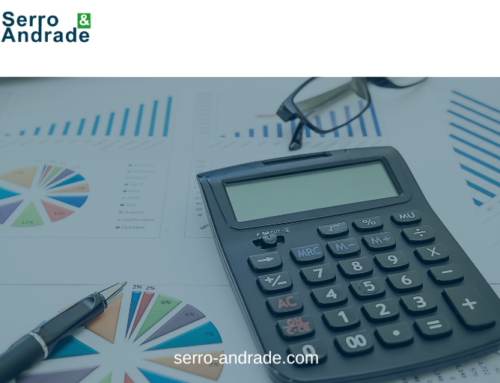The conditions for the attribution of per diems to public servants are set out in Decree Law no. 192/95, of 28th July, which regulates the allowance of per diems for missions abroad, and in Decree Law no. 106/98, of 24th April, which regulates the attribution of per diems in national territory.
Under the terms of paragraph d) of no. 3 of article 2 of the IRS Code, daily allowances are not taxed as work income in the part that does not exceed the legal limits, as long as the assumptions of its attribution to public servants are met.
As we have already mentioned, the assumptions for the attribution of the daily allowance are set out in Decree Law nr. 106/98, 24th April. The allowance of the daily allowance corresponds to the payment of a part of the daily amount that is fixed or of its totality, and, in accordance with the provisions of article 8 of that diploma, the daily limit of the daily allowance excluded from taxation is determined under the following terms
a) If the journey covers, even partially, the period between 1 p.m. and 2 p.m. - 25%;
b) If the journey covers, even partially, the period between 8 p.m. and 9 p.m. - 25%;
c) If the journey involves accommodation - 50%.
Accommodation costs shall be charged only for daily journeys not extending to the following day when an official has no regular public transport to return to his or her home by 10 p.m.
For journeys by successive days, the following daily allowance percentages will be granted:
It should be noted that in relation to the percentages referring to the payment of one or two meals and accommodation, the respective allowances will not be paid when the corresponding service is provided in kind.
We will now take a short interruption to clarify how, although without prejudice to a better opinion, the daily limit of the daily allowance excluded from taxation should be understood. Considering that the maximum daily limit excluded from taxation in national territory is EUR 50.20, the portion of the daily allowance excluded from IRS taxation is 25% of that amount, i.e. EUR 12.55, if the travel covers only one of the above-mentioned periods, with the excess being considered Category "A" income subject to taxation.
We stress that article 37 - Meal Allowance, of this diploma (DL 106/98), establishes that the amount corresponding to the daily allowance of the meal allowance is deducted in the daily allowance, when the expenses subject to compensation include the cost of lunch.
We think it useful to draw attention to the fact that the daily subsistence allowance and the costs of compensation for travel by an employee's own car in the service of the employer are two distinct realities.
As stated above, and we would ask you to forgive the redundancy, the purpose of the daily allowance is to compensate the worker for expenses incurred in travelling more than 20Kms from home, such as lunch (25%), dinner (25%) and overnight accommodation (50%).
The expenses with compensation for travel by the employee's own vehicle at the service of the employer are limited to 0.36 per km
These limits correspond to the legal limits from which the expenses in question are to be considered as remuneration for dependent labour (Category A), in the part exceeding the respective limits, as provided for in article 2(3)(d) of the CIRS.
The acceptance as an IRC deductible expense depends on the respective proof through a duly prepared and signed statement, as provided for in article 23.The acceptance as a charge deductible for IRC purposes depends on the respective proof being duly drawn up and signed, as provided for in article 23-A(h) of the CIRC, which stipulates that the following are not deductible for the purposes of determining taxable profit, even when recorded as expenses during the tax period: daily allowances and expenses incurred with compensation for travel by the employee's own vehicle, at the service of the employer, not invoiced to clients, recorded in any way, whenever the employer does not have, for each payment made a map through which it is possible to control the journeys to which these costs refer, namely the respective places, length of stay, purpose and, in the case of journeys made by the employee's own vehicle, identification of the vehicle and its owner, as well as the number of kilometres travelled, except in the part in which the beneficiary is liable to IRS.
It should be noted that the costs in question, daily allowances and the costs of compensation for travel by the employee's own vehicle at the service of the employer, unless charged to clients, are subject to autonomous taxation, as provided for in no. 9 of article 88 of the CIRC, at the rate of 5 %, except in the part in which the respective beneficiary is liable to IRS.
We would like to point out that even in the event of the maps enabling the control of travel not being available, and as such these costs are not tax deductible, they should be entered in field 730 of Table 07 of the model 22 declaration, whose instructions for completion state that in this field per diem costs and compensation for travel by the employee's own vehicle at the service of the employer should be added, not invoiced to clients, booked for any reason, in the part where the beneficiary is not liable to pay IRS, whenever the employer does not have, for each payment made, a map through which it is possible to control the movements to which the expenses refer, these expenses, although not tax deductible, are also taxed under IRC at the autonomous rate of 5%, as stipulated in no. 9 of article 88 of the IRC Code.No. 9 of Article 88 of the CIRC.
Article 42.1(f) [now Article 23-A.1(h)] of the IRC Code and Article 2.3(d) of the IRS Code, respectively, should be understood to mean any vehicle which is not part of the employer's fixed assets, nor any responsibility or cost for its use attributable to the employer".
Also with regard to the attribution of daily allowances and compensation for travel by own vehicle, the Binding Information on dossier 1927/2000, with a favourable ruling from the Director-General of Taxation, in 2004.02.13, clarifies that the managing partner can, in the same way as other employees, incur expenses with daily allowances and compensation for travel by own vehicle, which are proven to be indispensable for obtaining income, with the limitation set out in paragraph f) of no. 1 of article 42 [now paragraph h) of no. 1 of article 23-A] of the IRC Code.
We take this opportunity to mention that the amounts paid for the income under analysis must be declared to the AT, through the Monthly Remuneration Declaration (DMR), with the amounts exceeding the respective limits being entered under code A and those not exceeding them being entered under the codes:
A21 - Meal subsidy (non-subject part) - Meal subsidy in the part that does not exceed the limits established in subparagraph 2), of paragraph b), of no. 3, of article 2 of the IRS Code (meal subsidy in the part that exceeds the established legal limit or exceeds it by 60 % whenever the respective subsidy is granted through meal vouchers.
A22 - Subsistence allowance and travel by own car (non-subject part) - Subsistence allowance and the amounts received for the use of the employer's own car at the service of the employer, in the part in which both do not exceed the legal limits, as defined in paragraph d), of no. 3 of article 2 of the IRS Code.
Regarding the subjection of this income to Social Security taxation, Article 46 (3) of the Contributions Schemes Code establishes that it is subject to taxation under the same terms as those of the Personal Income Tax Code.
In closing, we recall that Ministerial Order no. 1553-D/2008, of 31/12, revised annually, among other remuneratory supplements, the scales of daily allowances, meal and travel allowances. Meanwhile, the following legislation was published approving a set of additional measures to reduce expenditure with a view to budgetary consolidation: Decree Law 137/2010 of 28/12, Laws 64-B/2011 of 30/12, 66-B/2012 of 31/12 and 82-B/2014 of 31/12, whereby the table currently in force, unless there is an error or omission, is as follows
Limits of the amounts of daily allowances, kilometres and meal allowances in force since 2013





